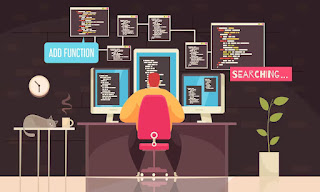Important Ways to Enhance the Engagement of Deskless Workers Using Digital Signage software
In today's fast-paced work environment, deskless workers play a crucial role across various industries, ranging from retail and hospitality to healthcare and manufacturing. However, engaging these employees can be challenging due to their physical disconnection from traditional communication channels like email or intranet. To bridge this gap, organizations are increasingly turning to digital signage software as a powerful tool to enhance engagement and communication with deskless workers. In this article, we'll explore important ways to leverage digital signage software effectively to engage deskless workers.
Real-Time Updates and Information Dissemination:
Digital signage software enables organizations to deliver real-time updates and information to deskless workers, ensuring they stay informed about important announcements, policy changes, safety protocols, and operational updates. By displaying relevant content on digital screens strategically placed in high-traffic areas such as break rooms, corridors, or manufacturing floors, organizations can ensure that deskless workers receive timely information without relying on traditional communication methods.
Visual Communication and Training:
Visual content is highly effective in capturing attention and conveying messages quickly. Digital signage software allows organizations to create visually engaging content such as videos, animations, infographics, and interactive presentations to deliver training materials, product knowledge, and procedural instructions to deskless workers. This approach not only enhances comprehension but also increases engagement by making learning more interactive and accessible.
Personalized Content and Targeted Messaging:
Tailoring content to the specific needs and interests of deskless workers can significantly enhance engagement. Digital signage software offers capabilities for content personalization and targeted messaging based on factors such as location, department, shift schedule, or employee preferences. By delivering relevant content that resonates with individual employees, organizations can capture their attention more effectively and ensure they receive information that is pertinent to their roles and responsibilities.
Recognition and Employee Appreciation:
Acknowledging the contributions of deskless workers is essential for fostering a positive work culture and boosting morale. Digital signage software can be used to showcase employee achievements, milestones, and recognition programs in a public and visible manner. Whether it's displaying employee of the month accolades, highlighting exceptional performance, or celebrating work anniversaries, digital screens serve as a platform to recognize and appreciate the efforts of deskless workers, thereby increasing their motivation and job satisfaction.Interactive Communication Channels:
Digital signage software allows for interactive communication channels that enable deskless workers to engage with content actively. Implementing features such as touchscreens or QR code scanning capabilities on digital screens empowers employees to access additional information, provide feedback, participate in surveys, or even submit suggestions or queries directly. By facilitating two-way communication, organizations can create a sense of inclusivity and involvement among deskless workers, fostering a collaborative work environment.
Integration with Existing Systems and Data Sources:
To maximize the utility of digital signage software, organizations should integrate it with existing systems and data sources. Integration with workforce management systems, HR databases, operational dashboards, and performance metrics enables dynamic content generation based on real-time data feeds. For example, displaying productivity metrics, sales targets, or inventory levels on digital screens can keep deskless workers informed about key performance indicators and organizational goals, fostering a sense of accountability and alignment.
Mobile Connectivity and Remote Access:
While deskless workers may not always have access to desktop computers or corporate networks, they often rely on mobile devices for communication and information retrieval. Integrating digital signage software with mobile applications or providing remote access via web portals allows deskless workers to engage with content seamlessly, regardless of their location. Whether it's accessing training materials on-the-go, receiving push notifications, or participating in interactive quizzes from their smartphones, mobile connectivity enhances the accessibility and convenience of digital signage for deskless employees.
Conclusion:
Digital signage software presents a powerful solution for enhancing the engagement of deskless workers by delivering real-time updates, visual communication, recognition, interactive channels, personalized content, system integration, and mobile connectivity. By leveraging these capabilities effectively, organizations can overcome the communication challenges associated with deskless workforces and create a more connected, informed, and motivated workforce.
By prioritizing engagement strategies tailored to the unique needs of deskless workers, organizations can cultivate a culture of transparency, collaboration, and empowerment, ultimately driving productivity, satisfaction, and success across the entire workforce.
%20(2).png)
.png)
%20(1).jpg)


Comments
Post a Comment